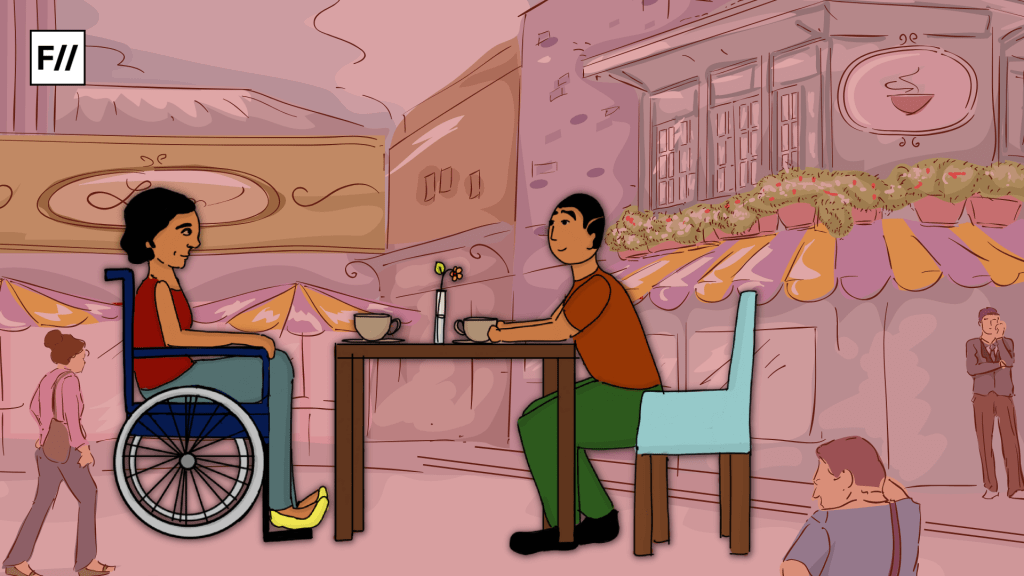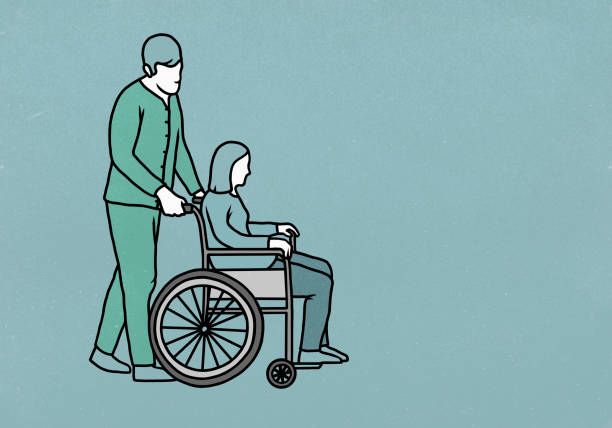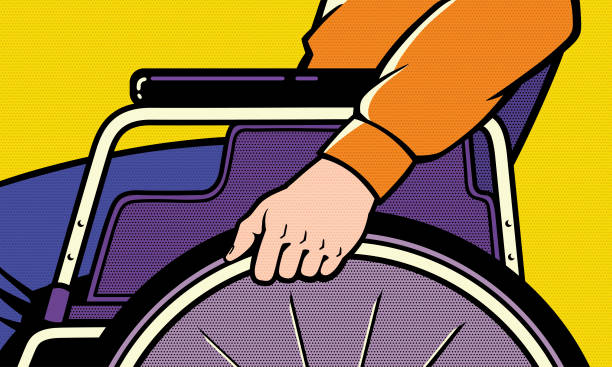The population of disabled people in India, as per the last population census taken in 2011, stands at 2.68 Cr out of 121 Cr. Out of that 2.68 Cr, the population of disabled women in India stands at 1.18 Cr. It has been found that the majority of the disabled population in India, is located in rural India, with a staggering count of 1.86 Cr and only 0.81 Cr of the disabled population is located in urban India.
However, the number of disabled women in India may be higher, given that a large number of people were added to the persons with disabilities list, after the passing of The Rights of Persons with Disabilities (RPWD) Act in 2016. A 2021 census is still due. A delayed 2021 census affects the documentation of the accurate number of persons with disabilities, also affecting accessible infrastructural development and policies.
The RPWD Act was passed in 2016 and came into effect the next year. The Act mandates that all public buildings, transportation, and other places accessible to the public must also be accessible to persons with disabilities. This means that the aforementioned places need to have facilities that make them accessible to persons with disabilities. Although there are penalties under the RPWD Act that penalise persons for violating the rules laid down under the Act, the Act does not penalise inaccessibility in general. This means that the places and transportation that are inaccessible, can continue being so, without the fear of a penalty pushing them into facilitating accessibility.
Despite implementation mechanisms being in place, such as District Committees, Special Courts and Disability Commissioner’s Offices to see that the act is implemented, places and transportation in India seem largely in want of accessibility.
The ground reality of mobility-disabled accessibility
The above was corroborated by India’s First Wheelchair Model, Disability Rights Activist and Motivational Speaker, Virali Modi who shared her inputs on travelling as a disabled woman in India. Stationed in Mumbai, shedding light on end-to-end inaccessibility, Virali shares, ‘From the moment you leave your house and until you reach your destination, accessibility is a challenge. Often, the destination isn’t accessible either.’

Commenting specifically on the accessibility of public transport like buses, trains and metros, Virali says, ‘They aren’t accessible whatsoever. There’s a lot that can be done but that would mean a huge overhaul of the current facilities. The need for end-to-end accessibility is extremely important. Metros in Mumbai are mostly accessible but since people who drive bikes like to get on the footpath, there are now pollards at every accessible footpath, which means by the lift of the metro too. Which means I can’t access it.’
Out of the 487 airports in India, 137 of them are operated by the Airports Authority of India (AAI). As per 2022 news reports, only 35 International and 55 domestic airports out of the 487 accounted for, have been granted accessible features. When looking at more economical modes of travel such as road transportation and rail transportation, only 5.7 per cent of buses are fully accessible with 29.2 per cent of them being partly accessible. As far as railways are concerned, as of 2024, 597 railways are accessible with lifts and escalators out of 7,337 railway stations in India.
Ordeal of travelling as a mobility-disabled woman
Maintenance of hygienic washrooms in long-distance commutes, such as trains, contributes to the accessibility and security of the commute. Accessible railway stations mean little if the train itself isn’t fully accessible.

Postponing washroom needs can lead to health risks for women. Clean and secure washrooms are essential for menstrual hygiene and women’s dignity.
Revealing the nature of toilets in train compartments, Virali shares, ‘The “accessible” toilets are mostly used as storage rooms. They’re usually not clean and they smell.’
If using train toilets as an able-bodied woman is difficult, then one can only imagine what it’s like to travel as a disabled woman in such spaces.
Travelling by air seems to be the most opted commute for persons with disabilities, for those that can afford it, in the urban area. However, even airports aren’t disability inclusive and lack much awareness when it comes to hosting persons with disabilities. In 2022, IndiGo Airlines denied a wheelchair user, a disabled child to board his Hyderabad flight from Ranchi airport. Despite pleas from fellow passengers, who pointed out that such discriminatory behaviour has been condemned by the Supreme Court previously, the disabled child, along with his parents were denied boarding on the grounds of not seeming ‘normal.’
In the same year, another wheelchair user person with a disability was denied boarding, as his wheelchair ran on four batteries instead of two (a Directorate General of Civil Aviation requirement).
Narrating her experiences of using Indian airline services as a disabled woman, Virali accounts, ‘The airports are accessible but the process and cabin wheelchairs that they provide, is, well, iffy. The wheelchairs that are provided at airports are usually in bad condition, especially the cabin chairs. Either the brakes don’t work or one of the armrests is broken. The conditions of the wheelchairs are bad.’ Detailing further, Virali shares the issues persons with disabilities like her frequently face with assistive equipment like wheelchairs, ‘Either they’ve broken our wheelchairs, or they have hurt us because not every disability is the same.’
Even for the provision of assistive equipment, airlines have been observed to charge a hefty sum. A disability rights activist was charged a sum of 2,500 INR for a wheelchair at Chennai Airport from where the activist was set to fly to Dhaka. Where the cost of a well-built wheelchair is somewhere between 4,899 INR to 17,500 INR and above, being a disabled person comes at a heavy cost in India.
Disability in rural India and the safety of disabled women
According to a 2023 Statistica report, the daily wage of a female casual labourer is 265 INR (approx) compared to 392 INR (approx) earned by a male casual labourer, in rural India. This means that a female labourer will earn a little under 8,000 INR (approx) monthly, whereas, a male labourer would earn a little under 12,000 INR (approx) monthly, for the same services provided. This gap in earnings between males and females in rural India impacts the quality of assistive equipment one can afford for themselves or a disabled family member, where a male member owing to a gender pay gap, can afford better equipment than a female. The average salaried woman in urban India earns 15,772.25 INR (approx) monthly (even lower in Gujrat), compared to the salaried man, who earns 20,666 INR (approx) monthly in urban India.

When the earnings of both urban and rural India are compared, it is clear that women are at a disadvantage, rural women more so, when it comes to purchasing quality assistive equipment. Some women in rural India may not even be able to purchase such equipment let alone quality equipment for travel, given the expensive cost.
The tax levied by the government on assistive equipment is 5 per cent. Therefore, a wheelchair costing 4,899 INR would have a minimum of 244.95 INR levied as tax, which is close to a day’s worth of pay for a female casual labourer, impeding them from purchasing assistive gear. Unless the government aids their cause by subsidising the prices of equipment, quality care remains a dream, out of reach for many women with disabilities.
Stressing the vulnerable position of women travelling with disabilities in India, Virali states, ‘Women with disabilities are more prone to sexual assault but that doesn’t mean it doesn’t happen to men. Unfortunately, it’s prevalent amongst the community, but I do feel it’s worse for women with disabilities.’
In an interview with a media house, Virali narrated her own story of being molested by porters at a railway station, owing to inaccessibility. This later propelled her to launch her #MyTrainToo campaign, where along with a railway official, Virali made 9 stations wheelchair accessible, without any renovations, just by providing portable ramps.
Where the security of able-bodied women in India is at risk, women with disabilities are a far more vulnerable target owing to their disposition. An app that alerts the authorities of the distress experienced by women travelling with disabilities on the spot, with the option of availing a rescue team, at a single tap, might prove useful.
Although the government launched the Sugamya Bharat App in 2021, as part of its Accessible India Campaign, for persons with disabilities to register complaints, this is only a grievance redressal mechanism and does not immediately bail out women with disabilities from distressful situations. As of 2022, the app had received 1,009 complaints, and 509 were still pending resolution until August of that year. Therefore, where grievance redressal is not taken seriously, there is little hope for emergency features like instant relief being available to women travelling with disabilities, on the app, anytime shortly.
The need for allocation of finances for disability-inclusive infrastructure
The Department of Empowerment for Persons with Disabilities receives low budget allocations, affecting accessible infrastructure development for persons with disabilities. It was allocated 1,225.27 Cr in the fiscal year 2024-25 which was only a 0.02 per cent increase from last year.
Earnestly advocating for accessibility for women travelling with disabilities and her community at large, Virali believes every person is temporarily abled making it every person’s duty to advocate for accessibility.
‘I really hope India becomes an accessible nation, especially for travel. We need ramps, lifts, accessible washrooms, and smooth paths for wheelchairs. There’s a lot that we need and this is just the tip of the iceberg (as lack of mobility is not the only type of disability people suffer.) I think it’s imperative that heritage sites, tourist destinations, and beaches should at least have ramps and accessible washrooms. I know a lot of women from my community who haven’t left their homes in years and would love to explore their country,’ Virali conveys.
About the author(s)
Shivangi Mukherjeeworks as a journalist and is passionate about voicing stories that make a difference. She enjoys reporting on gender justice, international affairs, legal affairs and lifestyle. When she is not working, you can find her in the gym or worrying about dog mom duties.




